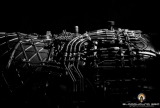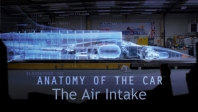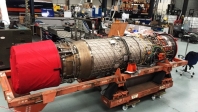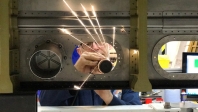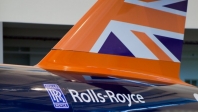There are four main classes of jet engine:
- turbojet
- turbofan
- turboprop
- turboshaft.
Turbojet
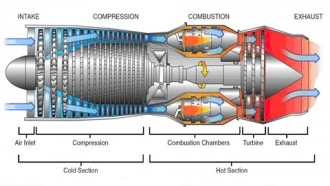 A turbojet (top image) is an early jet design with all the intake air going through the engine core. Turbojets were noisy and not very efficient.
A turbojet (top image) is an early jet design with all the intake air going through the engine core. Turbojets were noisy and not very efficient.
Turbofan
Turbofans (middle image) have replaced turbojets. They come in two flavours - the high bypass turbofan and low bypass engine.
The high bypass turbofan is typically seen under the wings of airliners. This type of jet engine is quieter and more efficient, and are great for subsonic airliners like the type you go on holiday in.
The advantage of the high bypass engine is that instead of generating all its thrust by accelerating a small amount of air by a large amount, it gets the same momentum change by accelerating a large body of air by a small amount, as only 10% of the intake flow goes through the engine core.
The second type of turbofan is the low bypass engine, where a significant portion of the intake air (around half) goes through the engine core.The bypass air is used to dilute the hot exhaust, reducing noise, but also provides an oxygen-rich mixture that additional fuel can be added to to provide extra thrust with reheat (also known as an afterburner).
This type of engine can work at a much greater range of Mach numbers and altitudes, and is typically found in combat aircraft.
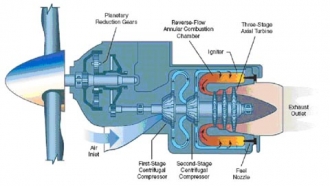 Turboprop
Turboprop
In a turboprop (bottom image), a jet engine is used to drive a propeller through a reduction gearbox driven off either the compressor or a power turbine.
Turboshaft
In a turboshaft, like the turboprop, power is taken from a gearbox driven by a power turbine. These are typically found on helicopters, and are also used for industrial and marine applications.

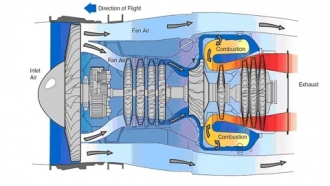
 Turboprop
Turboprop